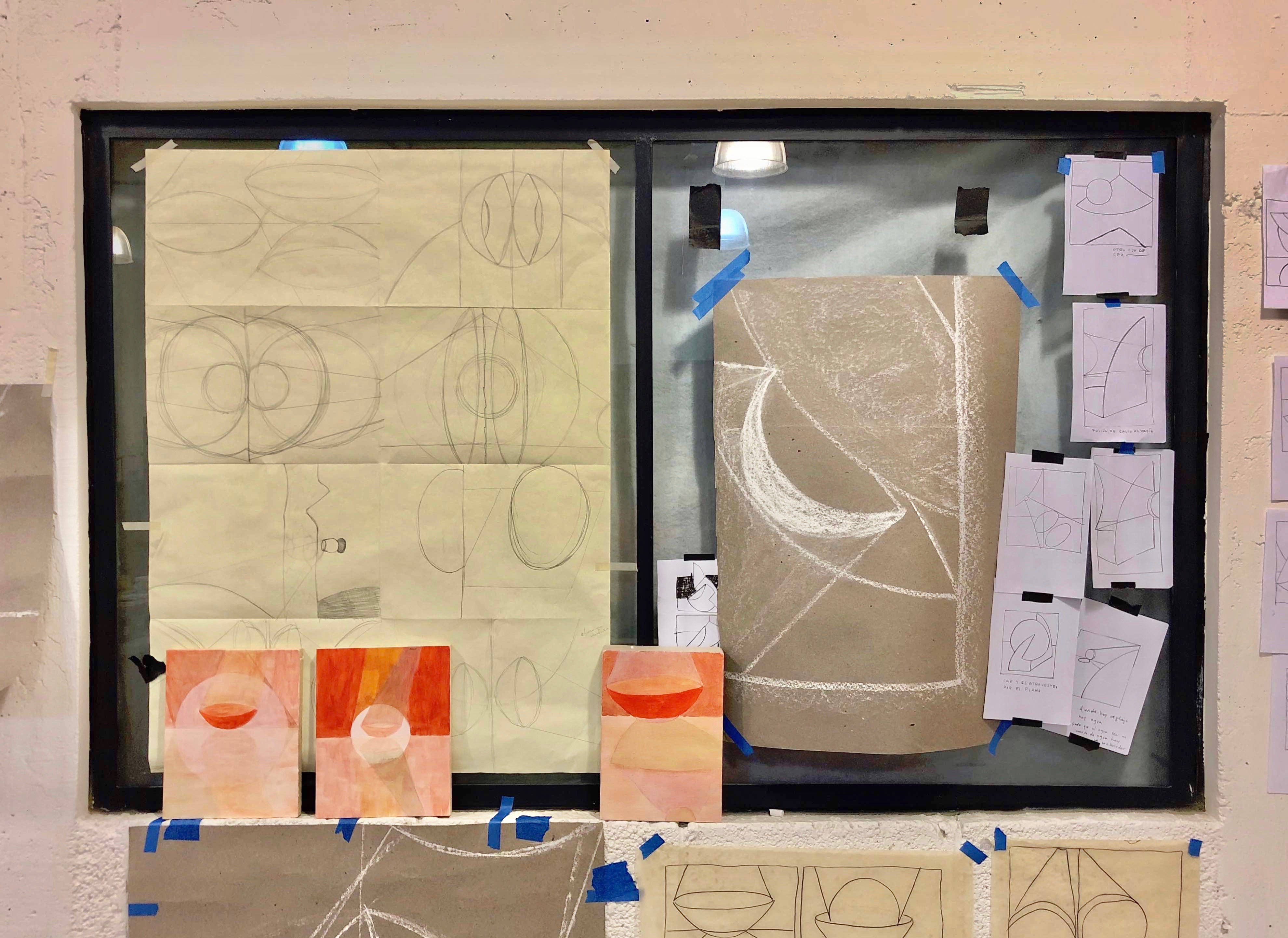
Interview
The art of welcoming: Interview with Celeste
by Antonia Alarcón
María Fernanda Camarena and Gabriel Rosas Alemán
Reading time
6 min
the blue of the sky depends on the darkness of empty space behind it. […]
blue is something of an ecstatic accident produced by void and fire.
– Maggie Nelson, Bluets
I would have liked to have begun this text by saying how I entered an unknown home, by describing its environment, its light, its decoration, but the pandemic didn’t allow for this. Through my screen I can only glimpse some plants in various containers with water and some color books. Despite this, María Fernanda and Gabriel—who are sitting on the other side of virtuality—smile, converse with me, show me photos of their time in San Agustín Etla, and talk with fascination about the colors of the sunset. We conclude that the sky has languages that we cannot decipher. Suddenly, the screen rises and María Fernanda takes the computer around the house to show me her room. “The cold comes in through this window,” she tells me, while narrating the typical problems of winter. “I’m already quite personal,” she says, laughing and leading me back to the living room. And that’s one of the things that stands out about Celeste: their hospitality.
Back in the summer of 2019, the artists María Fernanda Camarena and Gabriel Rosas Alemán decided to launch Celeste, their project as an artistic duo.*1 After a year of living together as a couple, each developing their own personal practices, they received an invitation (or as María Fernanda puts it, a provocation) from Viviana Kuri, director of the Museo de Arte de Zapopan (MAZ), to carry out an exhibition. From there they began exploring the possibilities of working together.
MFC: There was one thing there that led us to start thinking about this […] And the path surprised all of us.
Celeste materialized from something they naturally do with talent and pleasure: acting as hosts in their home, receiving their friends, putting on activities and dinners.
GRA: More than a matter of inventing something new, it was a matter of recognizing what we were already doing, and of what could be redeemed for this project. And for me it was like, “You and I are great hosts. Let’s do that, let’s have a gathering at the museum. Let’s take this opportunity just to extend what we already do at home.”
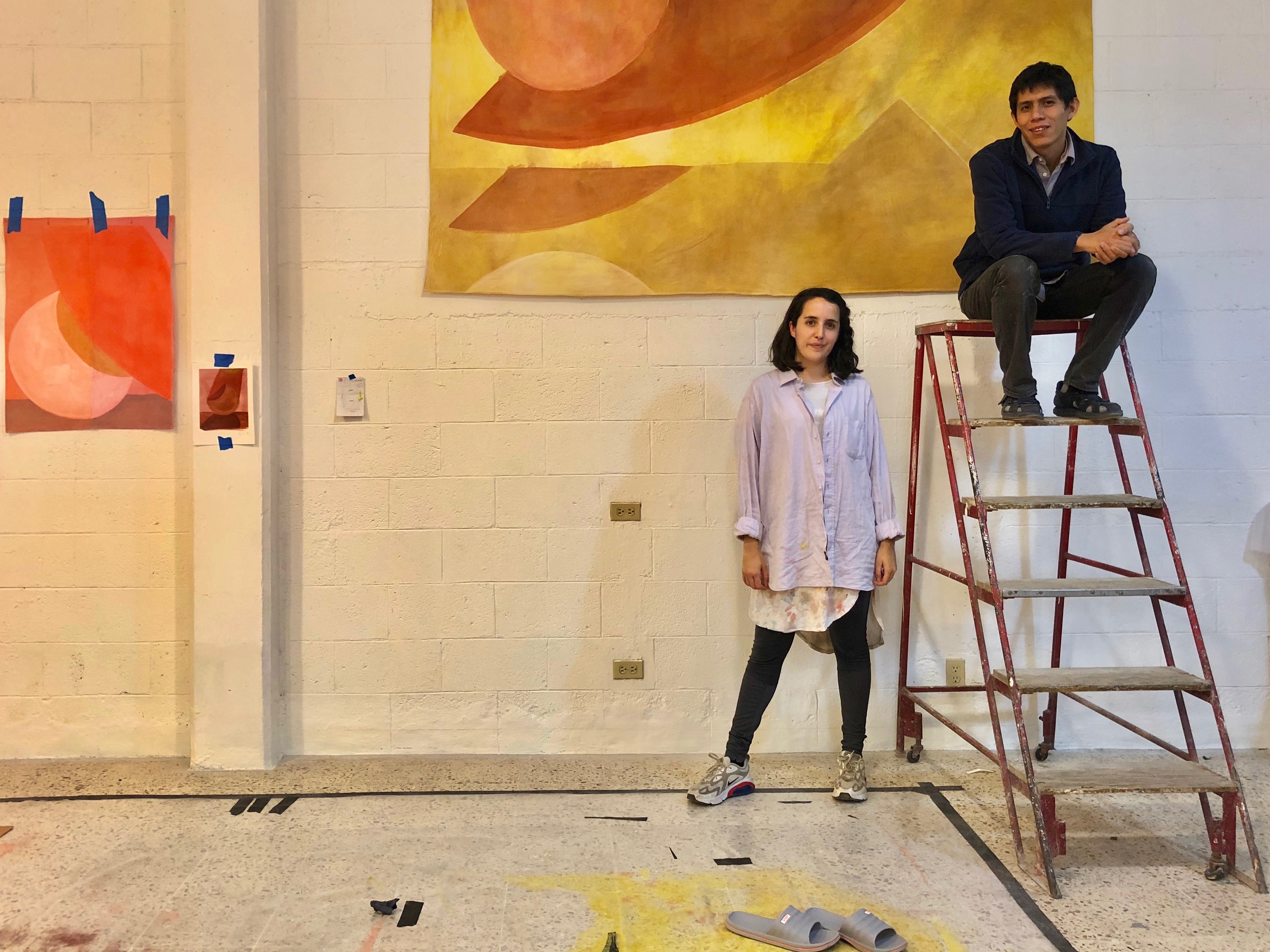
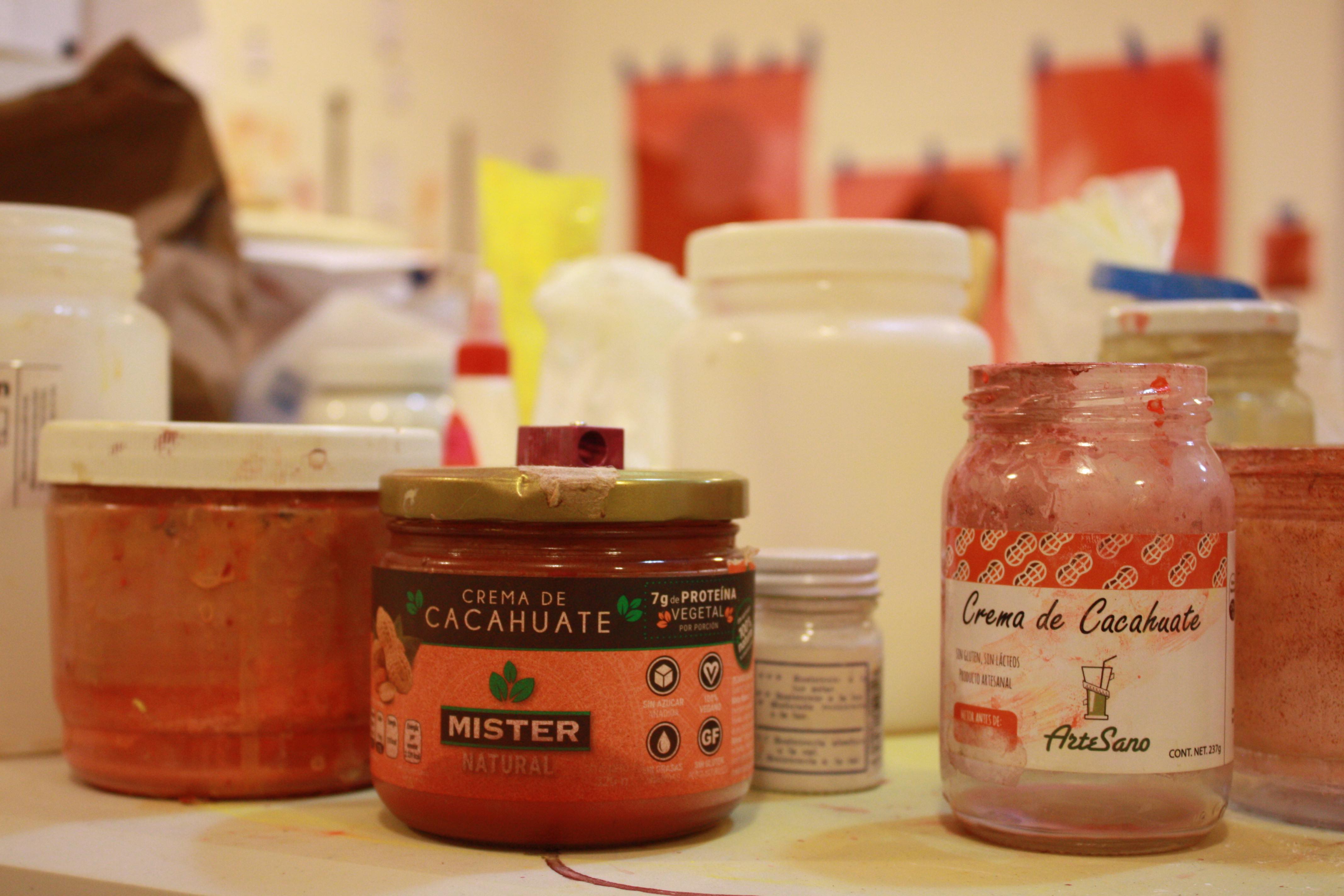
Following this coordination of wills came the material exploration of the pieces, in which they constructed the lattice of their individual talents; personal needs were appeased in order to make room for the needs of painting. In translating the home into the museum, a new language was constructed, one appealing to familiarity and warmth via textiles, books, and ceramics.
In these explorations, the viewers are fundamental, indeed the reason why the work exists: in order to receive them, and so that they can inhabit the pieces.
GRA: I had already worried about the work’s being warm in some way, that it would receive the other depending on there being a use in it.
After their exhibition at MAZ, Gabriel and María Fernanda decided to continue working together. They’re now carrying out a residency at Studio Block M74, a space in Mexico City’s Colonia Guerrero. In that space they are exploring the next steps and next possibilities of this shared life. Working within a shared penchant for delivering and containing, they plan to conclude their residency with a gathering under an awning painted by both of them, in that way thanking the space and its team for receiving them. Thus, the nature of Celeste is repeated across their works and actions. I think of it as the art of welcoming.
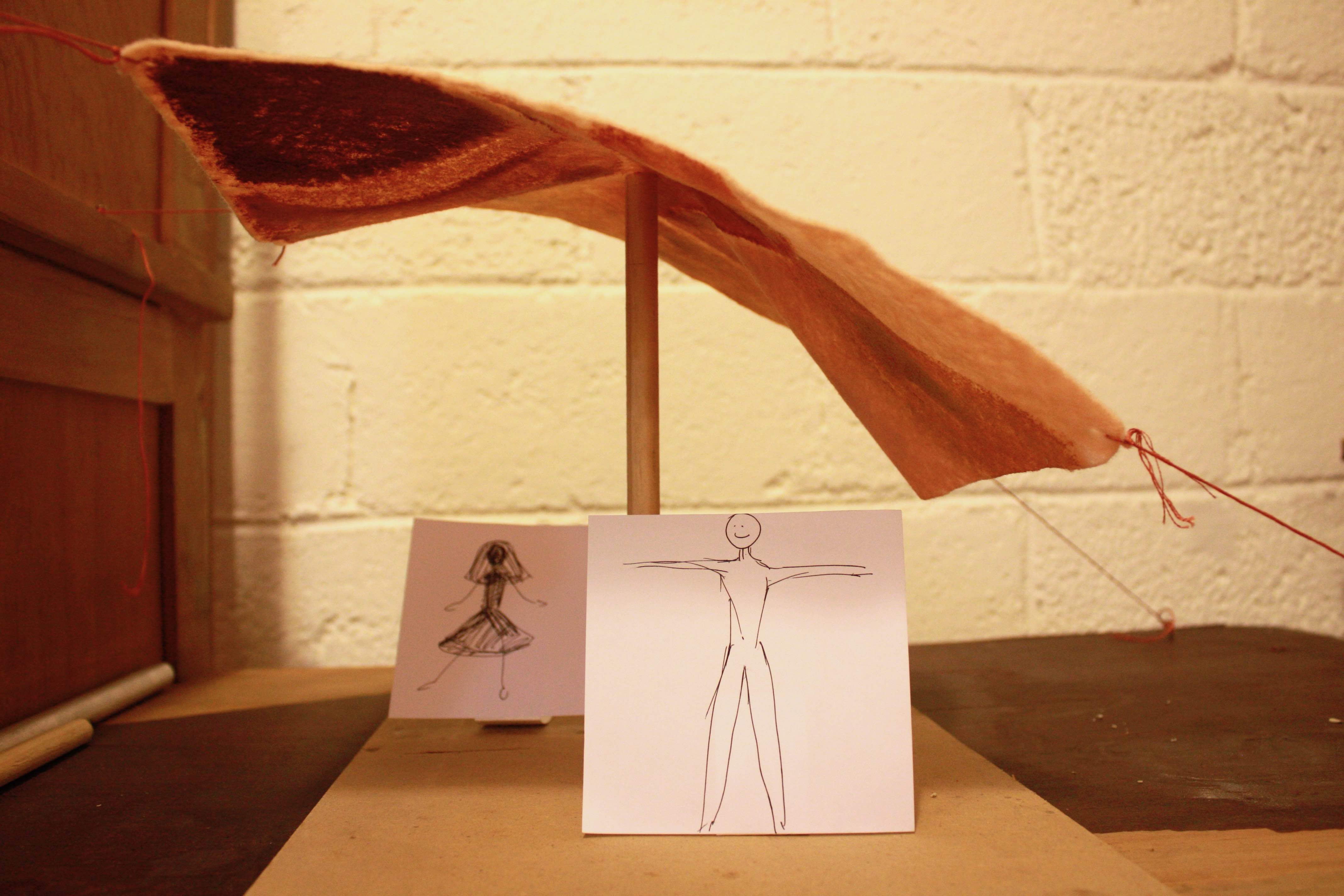

GRA: Somehow, in being two of us, each of us has a language that is being brought into the conversation, like two opposites.
MFC: Complementaries. […] Perhaps the background process, in which Gabriel is making space for me and I for him, brings about an object or an image that also has that subtlety. Yes, it’s deliberate, but it’s like that naturally since it’s a negotiation between two people.
Celeste functions at the meeting point of entangled sensibilities: two colors coming together to produce a third. Each one enriches the “Celest-ial language.” Gabriel describes it as two people holding a rope, one at each end, creating a tension that generates a balance and a horizon. Images like this one permeate their practice, out of a generosity that springs from them onto the viewers and back again.
GRA: If you look at a color for a long time, the brain compensates for that overexposure by generating a halo of opposing colors. In her book Bluets, Maggie Nelson talks about a restaurant where she worked, which was painted a bright orange. Upon leaving and arriving at her house, she saw everything with a bluish halo.
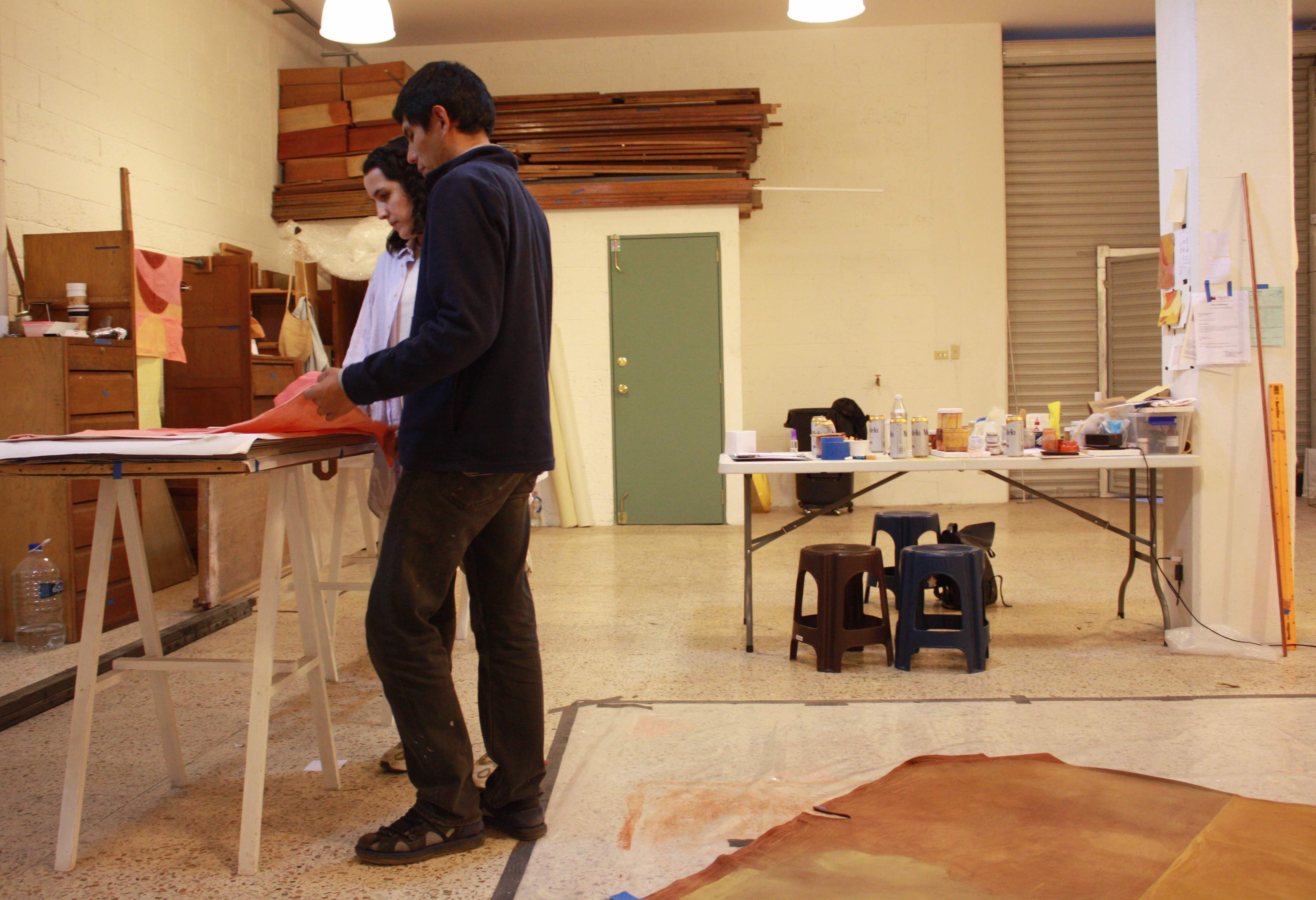
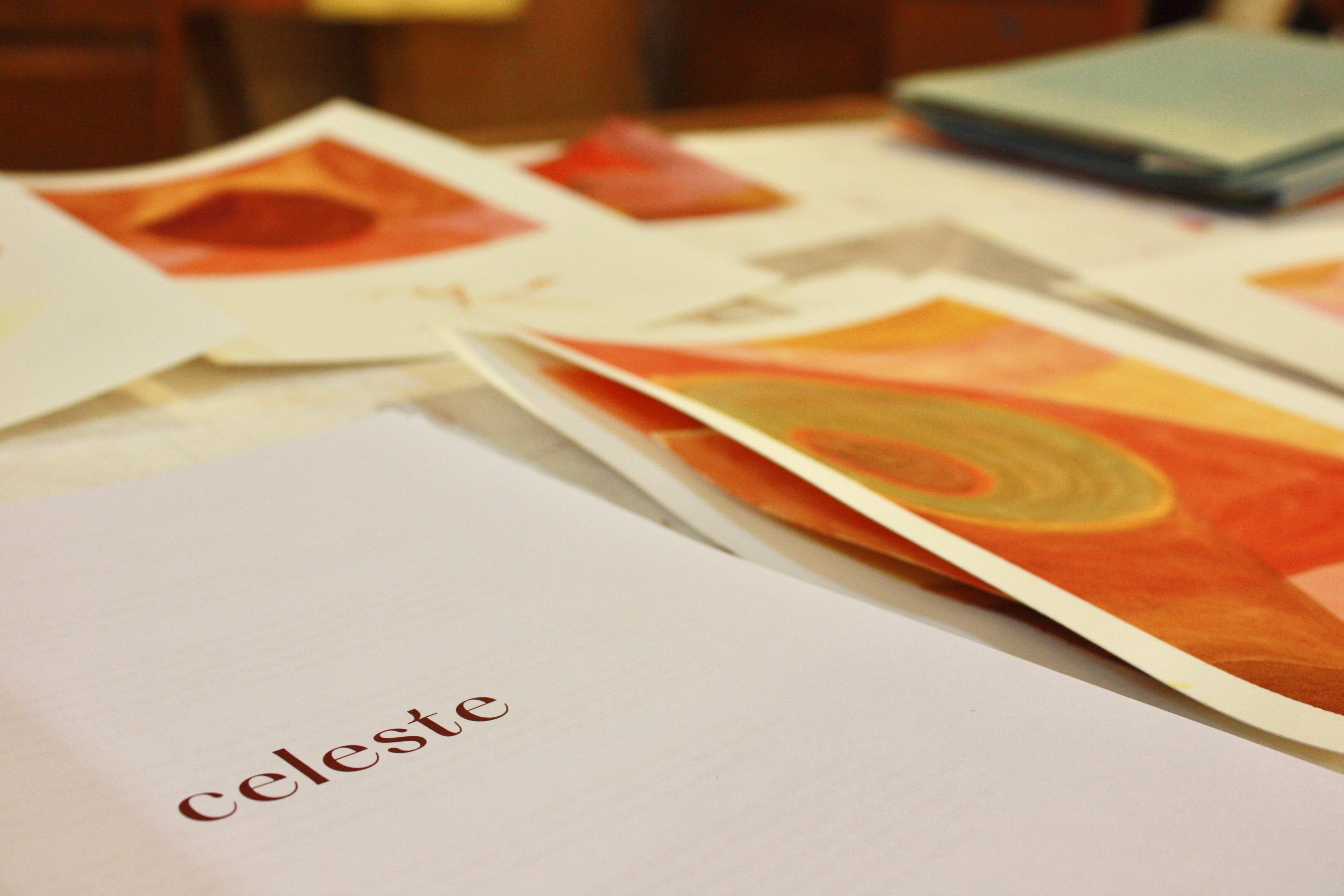
“Making space for the other” is one of the phrases guiding their project, in which that other is interchangeable among them themselves, the work, and, above all, the viewer. The pieces’ eloquence is combined with a sincerity and an affective search taking place within their projects. At the same time, they seek to maintain an openness to different interpretations, all of them correct.
MFC: It’s like a vessel contained inside another vessel. The multiplicity of spaces. I think a lot about the Zapatista phrase: “A world in which all worlds fit.”
Another piece they are planning with great enthusiasm is an open-air cookout with Colectivo Amasijo, where there will be a picnic on a painted canvas that will also function as a tablecloth. Both the awning at Studio Block and the cookout thus function as tools for transforming sites into more pleasant spaces. If the pandemic allows it, the picnic will be held during the month of February at Mexico City’s Bosque de Chapultepec.
Following a conversation full of laughter, we send each other good wishes and promises of a beer in person, the greatest of hopes in these times of COVID. I thank them because I could not have had a more generous interview. As we talked I came to forget about the screen, and it became clear to me that their home does not exist in physical space, but rather in them themselves and in the provision they make for the reception and contentment of those linked to their project. Upon seeing the tenderness and care they pour into their work, I was left thinking that after one sees so much of Celeste, everything is then perceived with a slightly warmer halo.
Translated to English by Byron Davies
*1: Translator’s note: In Spanish, celeste (as an adjective) refers to what is celestial or heavenly, and (as a noun) to a corresponding shade of blue.
Published on January 23 2021